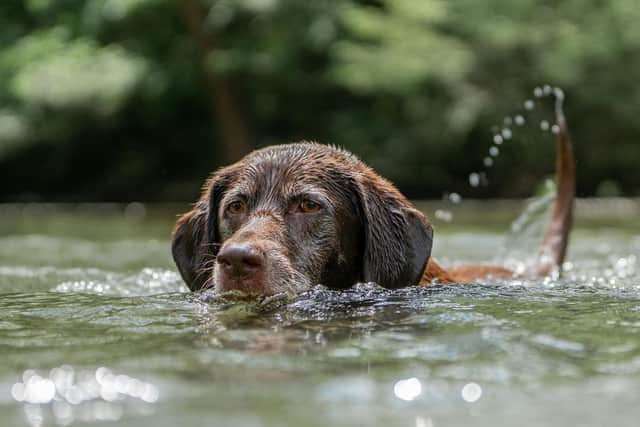Oxford Island: blue-green algae warning issued, who is most at risk and what are the symptoms?
and live on Freeview channel 276
Officials from the Northern Ireland Environment Agency (NIEA) have confirmed to Armagh City, Banbridge and Craigavon Borough Council that the toxic algae had been discovered at the popular scenic spot.
As a precautionary measure, warning signage has been erected at the site to warn visitors of its presence and advise that adults, children, and animals should avoid contact with the algae and the water close to it due to its harmful effects.
Advertisement
Hide AdAdvertisement
Hide AdSwallowing the water can cause stomach upsets or severe illness to people and death to animals. Contact with the water or the blue-green algae can also cause rashes and skin problems.


Members of the public are advised to report concerns using the Bloomin’ Algae App to help provide a rapid and more comprehensive picture of harmful algal blooms in the area and inform the relevant environment agency, local authority or landowner. Alternatively you can go to https://www.ceh.ac.uk/our-science/projects/bloomin-algae
What is blue-green algae?
Blue-green algae are natural inhabitants of many inland waters, estuaries and the sea.
Although referred to as algae they are, in fact, a type of bacteria (known as cyanobacteria) with the ability to use the sun’s energy to make food in the same way that many plants do. They may be found in suspension, attached to rocks and other surfaces at the bottom of shallow waterbodies and along the edges of lakes and rivers. The term blue-green algae includes a number of different species.
Advertisement
Hide AdAdvertisement
Hide AdAll species of blue-green algae need nutrients – nitrates and phosphates – to grow. If the water is enriched with nutrients and there is calm, sunny and warm weather conditions, then the growth may become excessive resulting in algal blooms.
These algal blooms cause the water to appear discoloured green, blue-green or greenish-brown and some species can produce a musty odour. When the blooms die, they break down, using up oxygen in the water and cause problems for other aquatic life, such as fish. In calm, warm weather some bloom-forming species will rise to the water surface and form a scum which may again be coloured.
For reasons not fully understood, some bloom and scum-forming blue-green algae are capable of producing toxins. Although many blue-green algae blooms are not toxic, some produce nerve or liver toxins and it is therefore safest to assume toxins could be present
In their most dangerous form, both in quantity and species, blooms have caused death in cows, sheep and dogs drinking significant concentrations at the water’s edge.
Who is at risk and what are the symptoms?
Advertisement
Hide AdAdvertisement
Hide AdHuman health risk from exposure to blue-green algae toxins can arise through swallowing or inhaling water containing the algae and through prolonged direct contact with exposed parts of the body including the skin, and sensitive areas such as ears, eyes, mouth and throat.
Different groups of water users are at different levels of risk, depending on the amount of time they are likely to spend in / close to the affected water. Participants in descending order of likely risk are as follows:
- Swimmers, paddlers, children playing at the water’s edge, dogs, other animals including some farm animals, fishermen using the bank and water’s edge.
- Windsurfers whose level of competence puts them at risk in the prevailing wind conditions of becoming immersed in or blowing into areas of algal scum.
- Dinghy sailors, catamaran sailors, canoeists and windsurfers competent for the prevailing conditions.
- Other boat users and fishermen fishing from a boat or pontoon.
Essentially the more likely you are to come into direct contact with the algal scum, the greater the risk of effects of exposure. Symptoms of those affected could be easily confused with a range of other illnesses so it is important to be aware of the risk of blue-green algae as a contributory factor.
Swallowing and/or inhalation can result in mouth and nose ulcers, blistering of the lips, abdominal pain, nausea, vomiting, diarrhoea, muscular pains, sore throat, dry cough, headaches, hay fever symptoms, dizziness and fatigue.